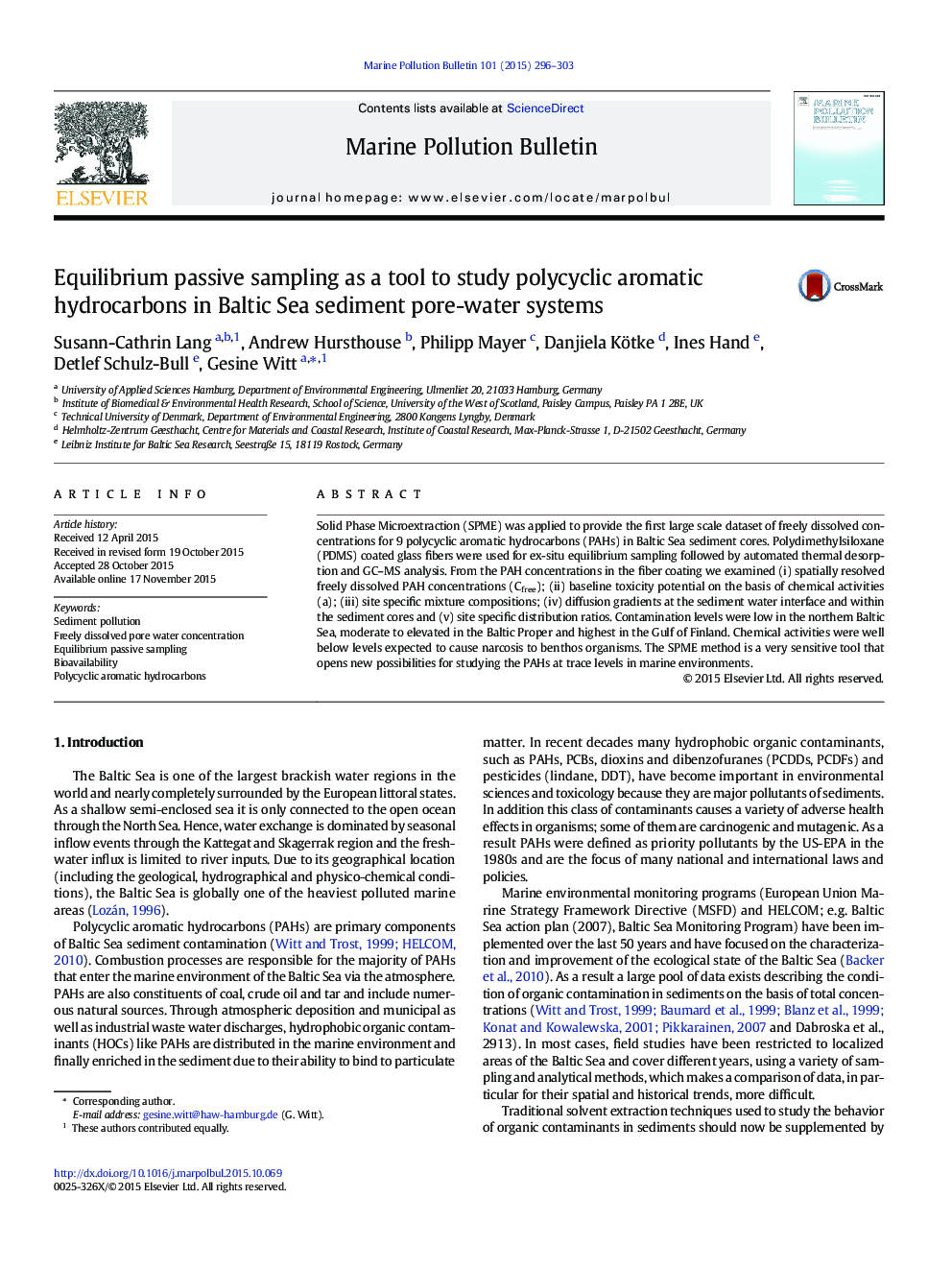| Article ID | Journal | Published Year | Pages | File Type |
|---|---|---|---|---|
| 4476615 | Marine Pollution Bulletin | 2015 | 8 Pages |
•First data set on Cfree and contaminant's chemical activities in the Baltic Sea•SPME proofed suitable and efficient to measure the bioavailable fraction of PAHs.•Regional differences in sorption capacity and sorptive strength were identified.•Baseline toxicity was below the threshold level for lethality at all sites.•Sediments were assessed to be a source of PAHs to the water body in all cases.
Solid Phase Microextraction (SPME) was applied to provide the first large scale dataset of freely dissolved concentrations for 9 polycyclic aromatic hydrocarbons (PAHs) in Baltic Sea sediment cores. Polydimethylsiloxane (PDMS) coated glass fibers were used for ex-situ equilibrium sampling followed by automated thermal desorption and GC–MS analysis. From the PAH concentrations in the fiber coating we examined (i) spatially resolved freely dissolved PAH concentrations (Cfree); (ii) baseline toxicity potential on the basis of chemical activities (a); (iii) site specific mixture compositions; (iv) diffusion gradients at the sediment water interface and within the sediment cores and (v) site specific distribution ratios. Contamination levels were low in the northern Baltic Sea, moderate to elevated in the Baltic Proper and highest in the Gulf of Finland. Chemical activities were well below levels expected to cause narcosis to benthos organisms. The SPME method is a very sensitive tool that opens new possibilities for studying the PAHs at trace levels in marine environments.
Graphical abstractFigure optionsDownload full-size imageDownload as PowerPoint slide
